
![]()
C O M M U N I C A T I O N S
12-Page Brochure Excerpt: Bryan Emery is active these days with his wife and sons Shon (not shown), Matthew, and Adam. For 16 years, Essential Tremor had gradually robbed Bryan of his confidence, causing him to withdraw at work, and prevented him from being active with his family. “Friends have told me it must take a lot of courage to have the surgical procedure,” he says. "I tell them it takes more courage to live with tremor every day than to have the surgery to relieve it." |
Bounce-Back Card — Reader Interest Excerpt: We ask new readers if they would like to continue receiving this newsletter, and if they would like to receive additional information about Activa Therapy. You can either fill out this card and put it in the mail, or call us at 1-800-644-5111, ext. 1030. |
Brain Autopsy Program — Letter Excerpt: The neuropathology report you receive will include a gross description and a microscopic description to confirm the patient’s diagnosis, to comment on other pathologies that may be present, and to describe the electrode track including microscopy of the track. The report for partial brains or blocks will be modified according to the quality and quantity of material Dr. Halliday receives. |
Brain Autopsy Program — Instructions Excerpt: The electrode may have been implanted a considerable period of time before death. If so, it may be necessary to remove new bone formation to free the button. |
Clinical Case Study Excerpt: The patient in this case was a 63-year-old man with a history of sudden cardiac death. During previous EP studies, ventricular tachycardia had not been inducible. The patient had dilated cardiomyopathy with a 30% left ventricular ejection fraction, NYHA Class IV. The patient had received a Jewel Plus™ Defibrillation System. |
Company Overview Presentation with Speaker Notes Excerpt: Hutchinson Technology Inc.—or “HTI”—is a world leader in the design and nano-scale manufacturing of close-tolerance computer components. HTI holds 161 granted—and approximately 80 pending—U.S. patents in chemical, mechanical, and electronic technologies.In the late ‘80s and early ‘90s, HTI saw the opportunity to apply these leading-edge technologies to the field of biomedical measurement. After eight years of researching the medical industry, in 1996, HTI formed the BioMeasurement Division. |
Contrast Delivery System Excerpt: Minneapolis, MN, December 14, 2006 – ACIST Medical Systems announced the recent publication of a clinical study which showed that use of lower volumes of contrast media while using the ACIST Contrast Delivery System were associated with a reduced relative risk of Contrast Induced Nephropathy (CIN). The study, Automated Contrast Injection in Contemporary Practice during Cardiac Catheterization and PCI: Effects on Contrast-Induced Nephropathy, by Jason Call, et al, was published in the October 2006 issue of the Journal of Invasive Cardiology (Volume 18, Number 10, pages 469-474). ACIST, with U.S. headquarters in Eden Prairie, MN, leads the market for variable-rate, automated contrast-delivery systems used in cardiac and vascular angiography. |
Customer (Physician) Website http://www.brainstimulation.net (Use your browser's "Back" button to return to this page.) Excerpt: A surgically implanted Kinetra® dual-channel neurostimulator, similar to a cardiac pacemaker, delivers electrical stimulation to precisely targeted areas on each side of the brain. Bilateral stimulation of these areas controls the signals that cause the disabling bilateral motor symptoms of Parkinson's disease. Patients may also have two Soletra® or Itrel™ II neurostimulators, each controlling the electrical signals to a single lead. |
e-Announcement of New Product Excerpt: Fully compatible with the existing programmer, the duel-channel Kinetra Neurostimulator improves upon the Soletra® Neurostimulator in a number of ways: |
Employee Newsletter — New Product Announcement Excerpt: Pino Carbone, Movement Disorders Marketing Manager for Medtronic Neurological, Italy, and the members of his team are promoting Activa Therapy to elevate the practice of functional stereotactic neurosurgery in Italy. “We’ve had great success telling neurosurgeons about Activa Therapy,” said Carbone, “and convincing them that this surgery will increase their visibility in the neurosurgical community while alleviating tremor for their patients.” |
Corporate Intranet Site Excerpt: This siteis a resource center for all employees who areinvolved with or interested in market development. The focus of this resource center is to facilitate our global goal of accelerating market growth through . . . collaboration, networking, and the exchange of best practices. |
Patient Q & A Excerpt: Q: Will any parts of the system show? A: All Activa Therapy System components, with the exception of the hand-held magnet and controller, are inside the body. Depending on a person's body build, the neurostimulators may be noticeable as small bulges under the skin, but they usually are not noticeable under clothing. A doctor will try to implant the neurostimulators where they will be the most comfortable and least visible. There also may be two slight bumps at the top of the patient's head, but they usually are not visible under hair. |
Physician e-Newsletter 1 Excerpt: In a study published in the March 2004 issue of Neurosurgery, researchers examined the responses of patients with primary or secondary dystonia who underwent pallidotomy or received pallidal stimulation. From the abstract: "Fifteen patients with dystonia had pallidal surgery (lesions or deep brain simulation). . . . This study indicates that primary dystonia responds much better than secondary dystonia to pallidal procedures." |
2-Page Medical Journal Ad Excerpt: The new Cx connector virtually guarantees implant success by accepting a supplemental electrode when necessary. Combined with Active Can™ technology’s 98% single-lead implant success, the Cx connector increases implant success to a full 100%. |
6-Page Brochure Excerpt: Imagine never thinking about the temperature around you because you’re always perfectly comfortable. Bedrooms are refreshingly cool for sleeping. The kitchen isn’t stiflingly hot. The den is completely cozy. Zoning gives you the control you need to enjoy perfect comfort, no matter where you choose to be inside your home. |
Air Quality Primer Excerpt: In theory, this electrostatic field polarizes dirty air particles, causing more of them to stick to the medium. In practice, however, self-charging media filters are only marginally better performers than throw-away fiber glass filters of the same density. The strength of the electrostatic field is insufficient to polarize most particles, and the polystyrene media is too thin for effective straining and capture. |
Automation White Paper Excerpt: The key to success in the open-system environment is a solid, function-oriented specification to which all parties will agree and for which they will be held accountable. Merely specifying the use of standards (such as “BACnet” or “LonMark”) will not necessarily lead to a control system that will perform to customers’ expectations. |
Energy Association Newsletter Excerpt: LonMark products are rapidly expanding the applications for peer-to-peer control networks. The result? For the contractor, a dramatic decrease in job costs and the ability to design and install a greater variety of systems, and for the end user, increased flexibility—in short, higher added value for all participants in a building controls project. |
Energy Efficiency Case Study Excerpt: The original designs of the Windsor complex were not based on energy efficiency. Time clocks were the only means of setting and changing schedules, and there was no way to shed loads. Degrading temperature control was causing simultaneous heating and cooling. |
Industrial Controls Brochure Excerpt: Count the control subsystems on your plant floor. How many incompatible communication schemes do you have? Now, with LonMark products, you can share real-time data between subsystems whenever you need it—to improve quality, increase output, and reduce costs in every corner of your industrial plant. |
Lake Water Cooling System Article Excerpt: Chilled water flows 2.5 miles from the heat-exchange facility to the campus chilled-water distribution system through 42-in. diameter coated, welded, steel supply and return transmission pipes. . . . The closed loop of campus water is pulled through the heat exchangers and then pushed by the pumps back to campus to minimize operating pressures in the plant. |
Full-Page Ad — Burner Control Excerpt: Take advantage of the optional communications package and the 7800 SERIES provides convenient local or remote monitoring, reporting, data logging, and troubleshooting. What’s more, it integrates with other Windows™ based industrial and building automation systems through either Dynamic Data Exchange™ or an open protocol card, to maximize facility management. |
Temperature Control System Article Excerpt: When the 4,000-sq-ft winery began operation in 1991, three Honeywell T775 controllers maintained internal temperatures for three steel storage tanks and the ambient room temperature for a handful of oak casks. Today, eleven T775s control the internal temperatures of 15 steel tanks that hold a combined 23,000 gallons of wine, and 150 oak casks that together can age up to 8,850 gallons of wine at a time. “The slightest variation in internal or surrounding temperature away from 55 degrees F can cause newly fermented wines to spoil and can degrade the quality of bottled wines,” said Pollina. |
.jpg)
Full-Page Ad — Mailing List
Excerpt:
The health-conscious cooks and food lovers who subscribe to EATING WELL magazine live an active, healthy lifestyle. These sophisticated subscribers have already proven to be receptive to various offers such as . . . general merchandise [and] fundraising.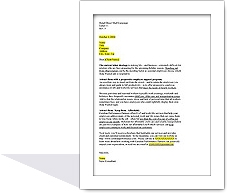
Employee Benefits Direct-Mail Campaign
Excerpt:
The current labor shortage is making life—and business—extremely difficult for retailers who are busy preparing for the upcoming holiday season. Standing out from other retailers can be the deciding factor as seasonal employees choose which Help Wanted ads to respond to.
Music Program Press Release Excerpt: The Bravo School offers music-enjoyment classes for children ages 18 months to 7 years, at locations in Lino Lakes and Shoreview [Minnesota]. Called Kindermusik, the program includes an audiotape, song book, and music book for each of three levels. “The idea is to help parents bring more music into the home to share in a family setting,” says Hays. “When parents attend with their children, they share the joy of music in the weekly meetings. Then the tapes and other materials let them carry those ideas home for times during the week.” |
Organization Identity (Logo and Stationery) |
Shaken Baby Syndrome Curriculum Excerpt: In this activity, the instructor explains the basic operation of the [Shaken Baby Syndrome] SBS Simulator, and uses the simulator to demonstrate the injuries a baby would receive from a shaking incident. Students see the areas of the brain that would be injured by shaking, and learn the functions that are lost when those areas are injured. Students also learn about the other injuries that sometimes accompany SBS. |
Software Help Guide Excerpt: 5. At the "Simulation" screen, complete the following fields:
|
Tobacco Education Success Story Excerpt: Two levels of surveys were administered, depending on whether the participants were in elementary, middle, or high school. A comparison of the answers before and after the [tobacco education] program revealed that participants gained a greater understanding of the physical effects of tobacco, including the effect cigarettes have on their taste buds and on their personal appearance. . . . The program also increased teens’ awareness that nicotine is stimulating and not relaxing. |
Effectiveness of Tobacco Education Program Excerpt: The interactive tobacco education program described in this report addresses teenage tobacco use through a safe and mediated simulation of addiction and an accompanying curriculum. The findings presented in this paper support the program’s positive effects on participants’ beliefs about the importance of being healthy, their normative beliefs, their beliefs about tobacco addiction’s control over their choices, and their intention to resist peer pressure to smoke. |
Quick-Start Guide (Software) Excerpt: For easy reference, screens use consistent terminology and action buttons are found in consistent locations, as shown below.[Screen capture] 1. Screen Title describes the screen’s function. 2. Software Help opens to the interactive Help guide. 3. Action Buttons show the actions the user can take for the information selected in the Information Area below. 4. [continues] |

Web-Based College Writing Course
Excerpt:
- Your reader should find the graphic, figure, or table immediately after the paragraph in which the first reference to it occurs. Our textbook supports this guideline faithfully.
- Figure captions and table titles must be in a consistent format throughout a document. Our textbook’s caption style requires complex spacing, and might not be easy to reproduce if you aren't familiar with all of Word's formatting features. Instead, you can simply center the graphics and tables on the page, with their captions or table titles centered under or over them, respectively.
Site best viewed with Internet Explorer Version 7,
Firefox 2 and 3, and Safari.
© 2008 Dorian Harvey Communications
Site design
by EMWD
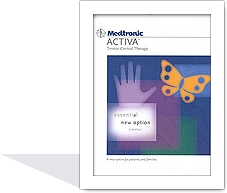

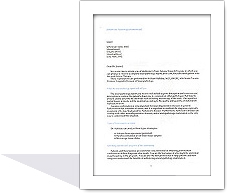

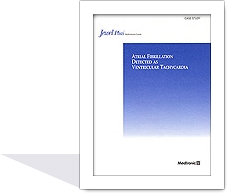
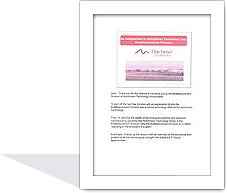
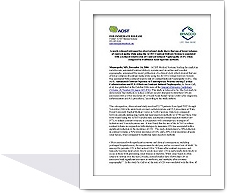
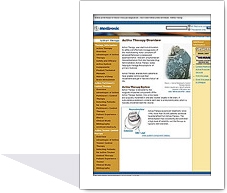
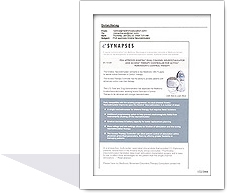
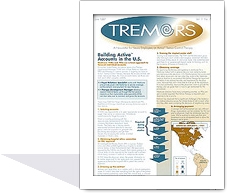
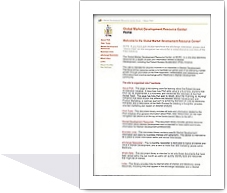
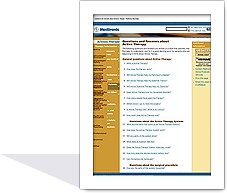




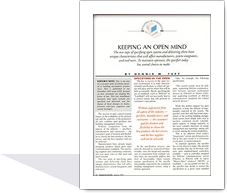
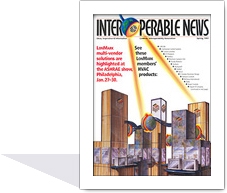

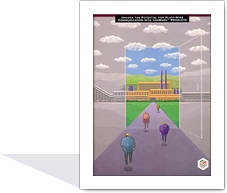




.jpg)
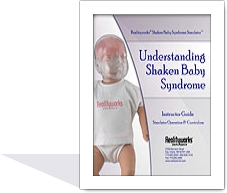
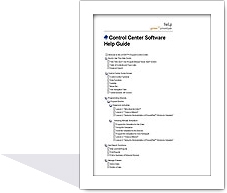
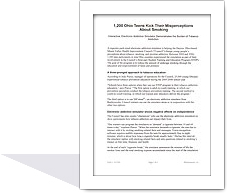

.jpg)